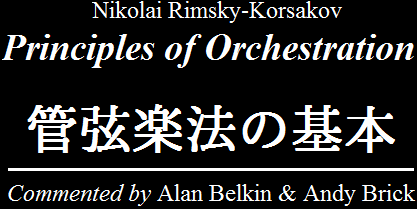For those who want to use authentic orchestral sounds with software instruments but don’t know the specific methods and want to learn—here are two helpful websites.
“Easy Orchestration” (Kantan Orchestration)
The first is a site called “Kantan Orchestration.” Under the slogan, “Orchestration that sounds like an orchestra with minimal study,” it provides simple explanations on everything from the characteristics of each instrument to actual orchestration, using an abundance of reference audio examples.
As the author himself states, “I wrote mainly about the things ‘I wish I had known first’ when I started working,” it’s wonderful how the key points are simply summarized to guide one’s first steps.
Beginner sites often fall into the trap of either being cluttered or being too simple and missing the key points, but this site shows no signs of that.
OTO×NOMA Orchestration Curriculum
The second is the orchestration curriculum on the music learning portal site “OTO×NOMA.”

All articles other than the video seminars can be read for free.
Starting with the basic knowledge of each instrument that constitutes an orchestra, it covers a full range of knowledge necessary for orchestration, including arrangement techniques to achieve authentic orchestral sounds and even mock-up techniques to create realistic sequences.
A key feature is that it explains practical orchestration techniques in detail, following the actual procedures. It carefully explains essential elements that need to be understood, such as the two important perspectives in orchestration, the compatibility between instruments, and the volume balance of each instrument group.
About Rimsky-Korsakov’s “Principles of Orchestration”
In the past, there was an excellent site called “Principles of Orchestration On-line,” but unfortunately, it is no longer active. This site explained the contents of Rimsky-Korsakov’s “Principles of Orchestration” using a software instrument called Garritan Personal Orchestra (GPO) for performance and commentary.
Fortunately, however, a Japanese translation of “Principles of Orchestration” is now available, and the full text can be read on the site below.

A book version is also available on Amazon. Note that Volume 2, “Musical Examples,” has not been translated, but the original Volume 2 can be downloaded from the site above.
Comments
The concept of “Shu-ha-ri” (a Japanese martial art concept about the stages of learning to mastery) is always mentioned in the training of any discipline, and it strongly applies to orchestration as well. In the world of Kabuki, it is said that those who try to go their own way from the beginning or are content with ambiguous learning are not “unconventional” (kata-yaburi, breaking the mold) but “formless” (kata-nashi).
Even if it seems like a detour, the experience of first creating a work using an orthodox writing style will serve as a significant foundation for stepping up later, and I believe the two sites mentioned above will be a great help.
Ravel is always mentioned as a pinnacle of orchestration, but if you try to adopt his orchestration techniques right away, you will be confronted with the fact that “it is inseparable from his unique compositional style, which includes a distinctive harmonic sense and phrasing.”
In the end, orchestration is closely related to each individual’s compositional style, so at a certain level of proficiency, I think it’s important to have the mindset of refining it as an inseparable element in polishing and expressing one’s own music.
It could also be said that the ultimate object of orchestration is one’s own “inner music that one is about to express.”
In any case, after taking the first step through the sites introduced here, I believe it all comes down to enriching and training the imaginative power that connects the score (sequencing) with the actual performance and sound. Let’s listen to many works carefully and repeat the cycle of trial and feedback with our own hands.
Related Articles
For more on helpful orchestration books, please refer to the following articles where I discuss them.





